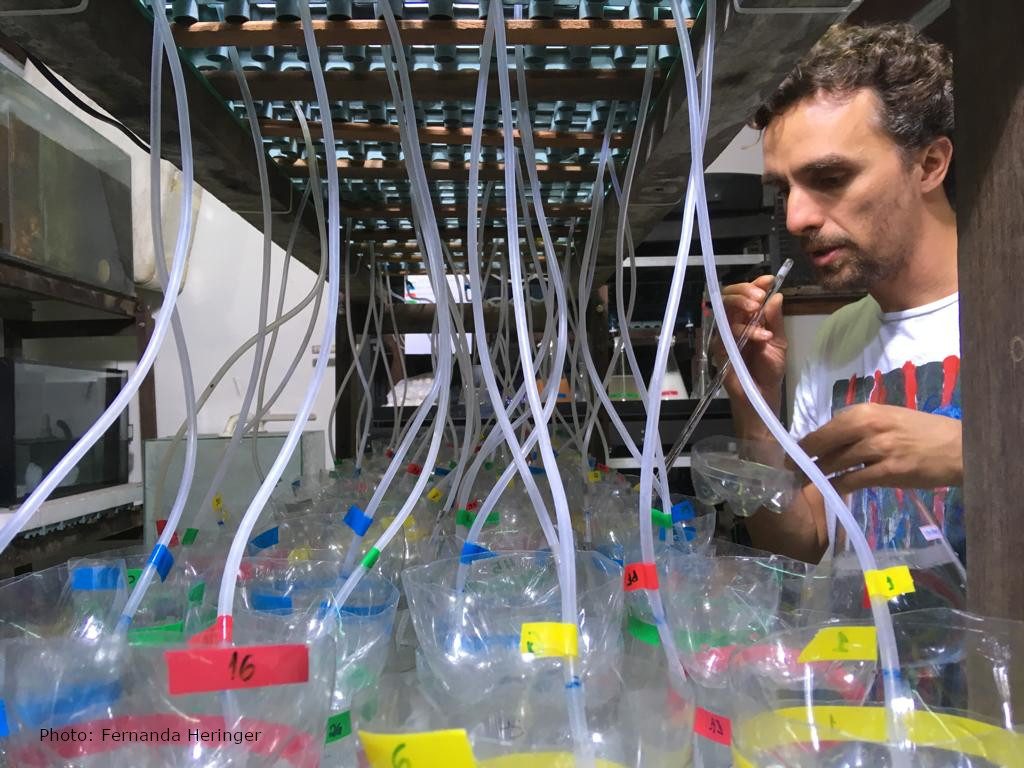Since I learned that the biological effects of microplastics would be the focus of the GAME project in 2019, I was enthusiastic to participate. The effects of microplastics are a subject that I have been studying already in the last years during my undergraduate course in Marine Biology at the Universidade Federal Fluminense (UFF) in Niterói, Rio de Janeiro, Brazil. Already since 2002, GAME is strengthening the partnership between the renowned GEOMAR and my university. I already knew about the scope and the seriousness of this programme before I participated myself, since I helped the Brazilian GAME team in 2018 when they did their experiments. Paula Bravo and Konstanze Bergunder researched the effects of rising ocean temperatures on sea urchins and their macroalgal diet.
Since not enough German students applied for the programme in 2019, it was not possible to find a team partner for me and I therefore became the only single-student team of this year. This increased the challenge for me. Running the project in Brazil was already a challenge anyway. This is because of the troubled political, economic, and social circumstances that we are currently going through. A part of this is due to the regrettable disinvestment of public funds, which were initially destined for education and research in our country. With many difficulties, my university UFF is bravely resisting the demolition of the education system and the privatization strategy of the government. Founded in 1965, UFF is the third largest Brazilian federal public university with regard to the number of students enrolled, which currently is about 50,000. The Department of Marine Biology at UFF, where I am based, has been internationally recognized for its excellence and its highly qualified scientific and technical staff. Although the overall situation was rather discouraging for me, the support and the experience of Prof. Dr. Bernardo da Gama, my supervisor at UFF, who is a GAME science partner since 2002, gave me the confidence to face the difficulties. Challenge accepted!
The preparatory course in Kiel during March was very important for aligning the various ideas and suggestions of all the participating students, who, guided by GAME coordinator Dr. Mark Lenz, were able to develop a common protocol for the planned experiments. The intense interaction between the international students, who mutually respected their different origins and cultures, during the four weeks of the course, made it possible to use the knowledge and competence of each one of us for turning the project into a success. It was an intense period with of a lot of learning, reflection and exchange, while our research objective was always the central point of the group discussions.
As soon as I have returned to Brazil, I met the trainee students from our laboratory to present the GAME experiment to them. Our Marine Biofouling Laboratory currently has 10 students, who could potentially help me with running the experiment and I knew that their participation would be very important and indispensable for the success of my work. Therefore, during the first weeks, I needed to convince the students but also the professors of the other working groups in my department to collaborate with me. The labs of Prof. Dr. Diana Cavalcanti and Prof. Dr. Abilio Soares-Gomes provided me the glassware, a microscope and precision scales that were needed for the experiment. I also established an important partnership with Prof. Dr. Elisabete Barbarino from the Laboratory of Algal Physiology and Cultivation, who, with her student Luana Miranda, provided me the microalgae that I needed for feeding the mussel, which I used as test organisms, throughout the experiment.
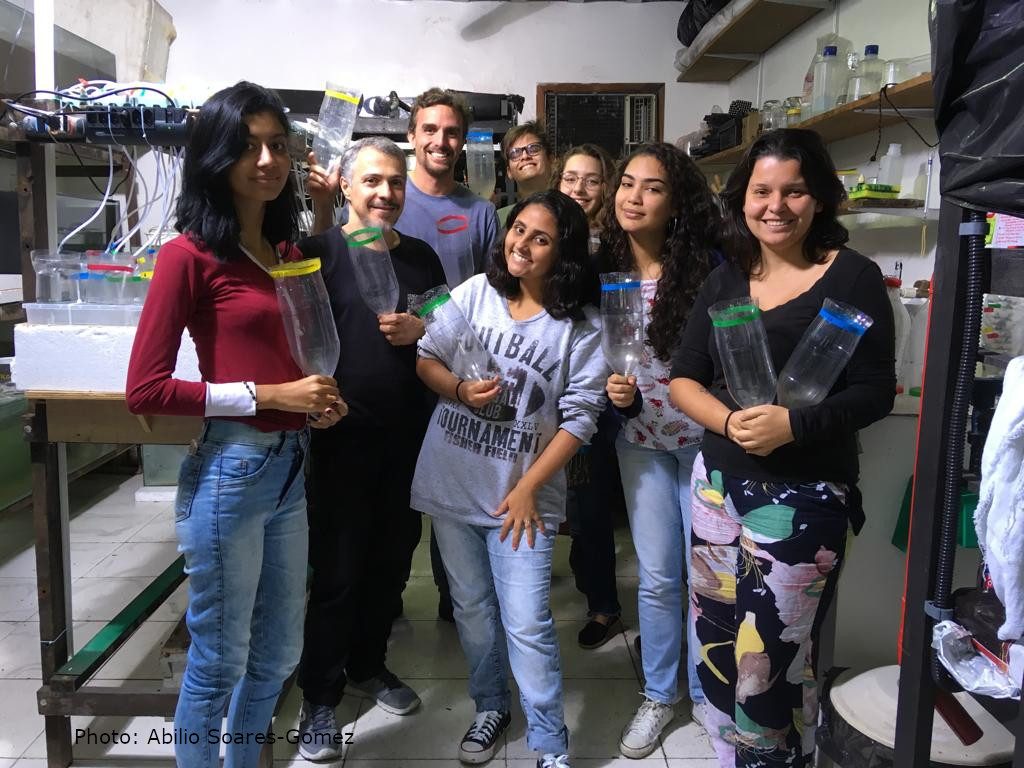
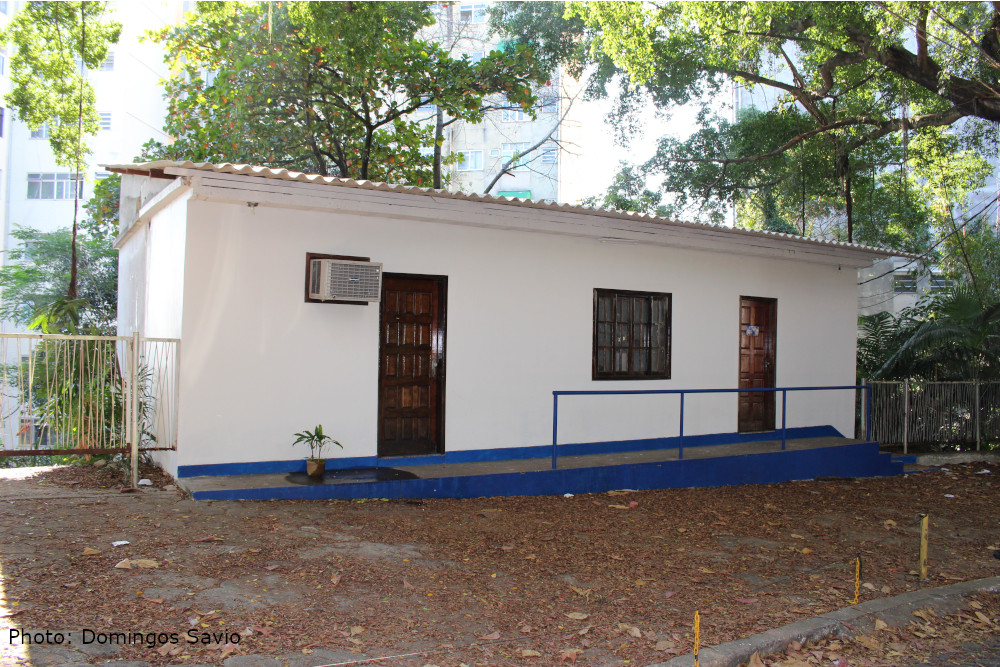
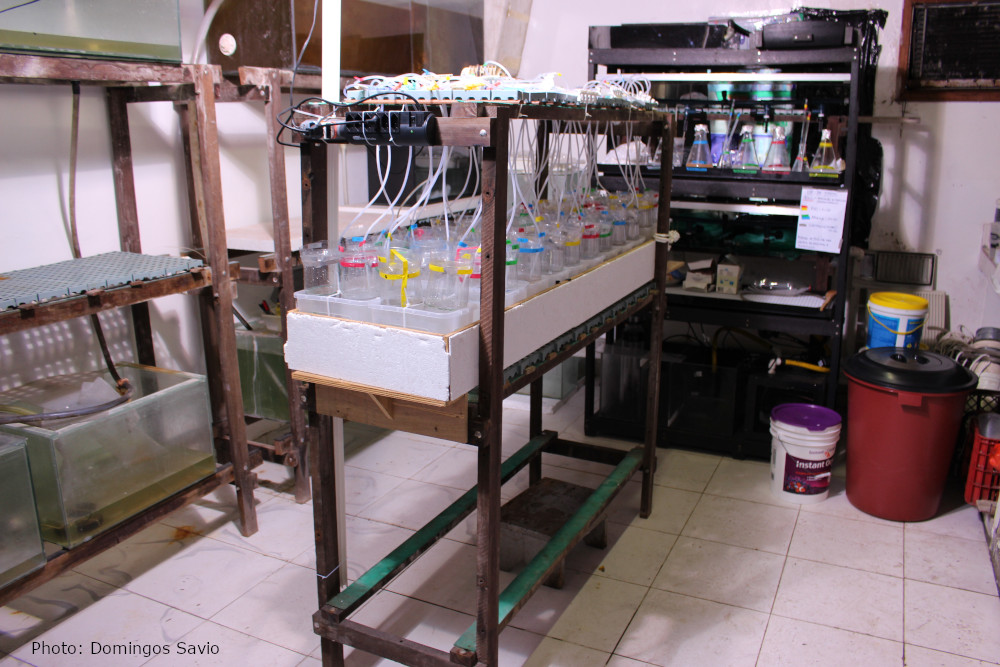
From May on, I could look after the set-up of the experiment and adapted the laboratory facilities, which are available at our university, to my needs. Unfortunately, the Marine Biofoling laboratory is currently dismantled as we are waiting for the moment in which we will move into a new building. However, I was at least able to take advantage of hoses, plastic boxes and remnant air pumps, which were still around from previous GAME projects that took place in our lab. Furthermore, most of the bottles, which I used as experimental units, were collected by the lab students within less than a week. Each student brought a few bottles from his/her home and I collected some more from recycling bins. The structure was ready! Now only the filter-feeders were still missing…
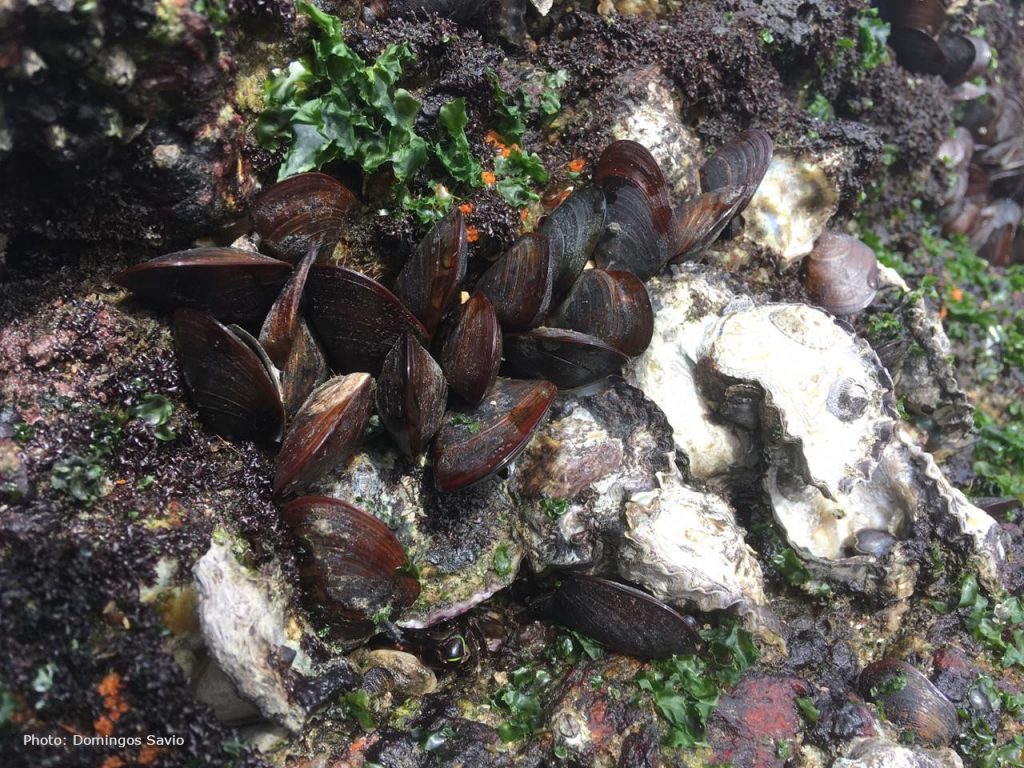
As I am a single-student team, I only worked with one test species and this was the brown mussel Perna perna. I counted on the fact that this species is omnipresent on the rocky shores along Guanabara Bay, which is located near the university. Guanabara Bay is one of the most polluted bays in the world and has over 16 million people living in the surrounding cities of Rio de Janeiro and Niterói. The intense maritime activities at the harbour of Rio de Janeiro and the lack of basic sanitation in the Guanabara basin spill a huge amount of domestic and industrial sewage directly into the bay or into its affluent rivers. Frequent oil spills and the discharge of ship ballast water further aggravate this situation. However, even under these conditions Perna perna is commercially exploited by shellfish farmers and artisanal fishermen (“marisqueiros”), who extract hundreds of pounds daily from the bay and its surroundings. Although the fishing pressure is intense, I had no difficulties locating large mussel banks. They mainly contained juvenile individuals, which were still too small for human consumption. In June, I took advantage of spring tides to collect the first set of individuals that was used in the pilot experiment. The highlight of collecting the mussels at Boa Viagem beach was the view to Rio de Janeiro that you have from there!
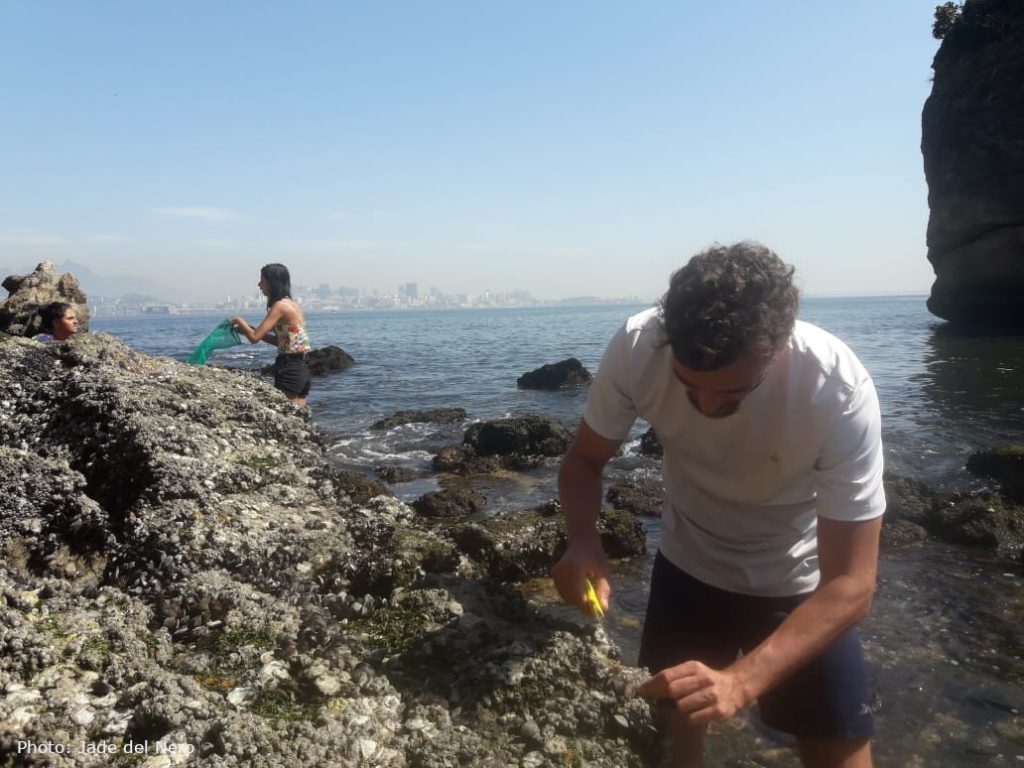
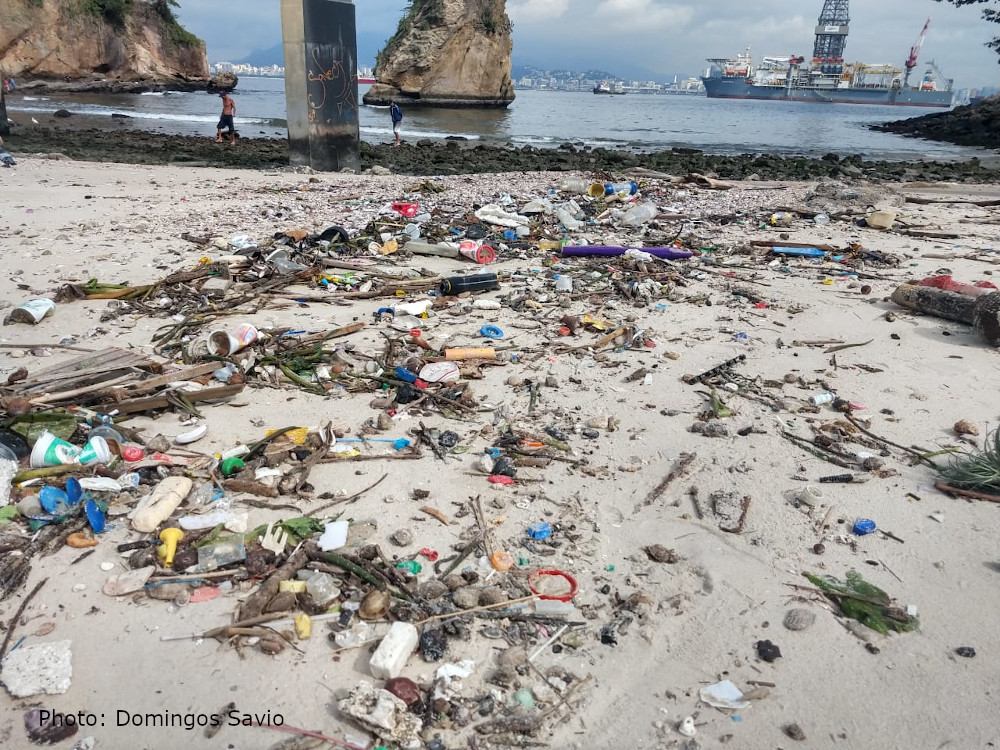
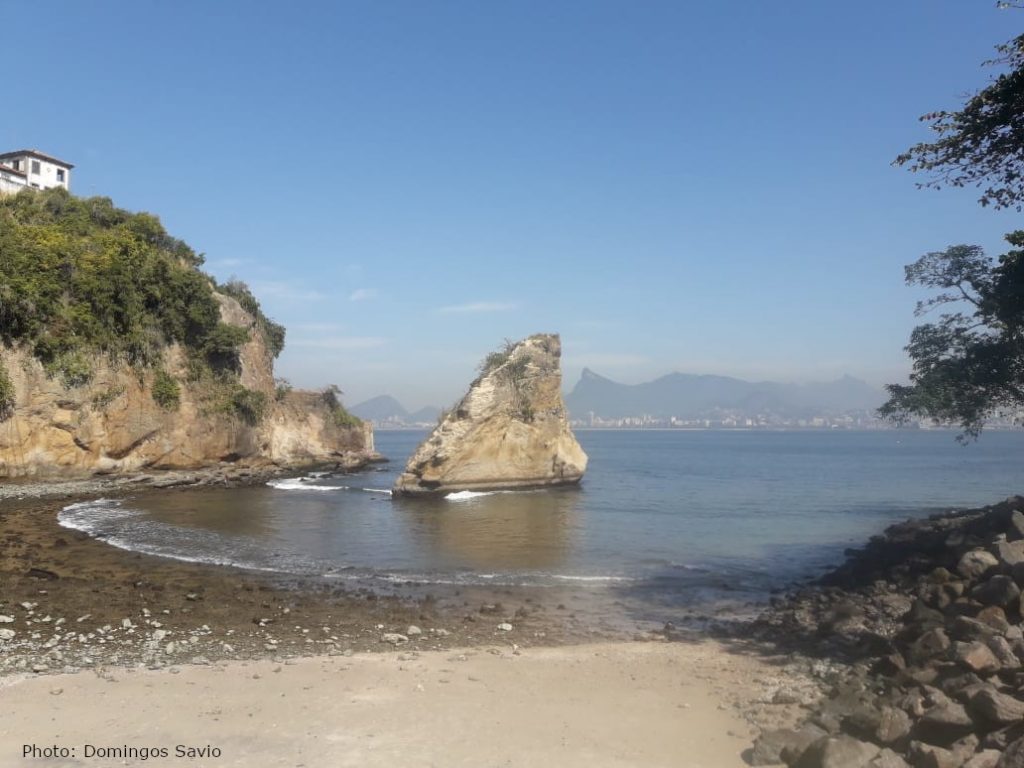
I ran a pilot experiment in June that allowed me to practise the methodology for accessing response variables such as respiration and filtration rates. Furthermore, I could test the tolerance of the mussels to exposure to microplastic and red clay. This period was also very important for training my helpers and for defining the routines, which were necessary to maintain the experiment. Due to the limitations that I already mentioned, I needed to reduce the GAME experiment to a design with two particle types, i.e. PVC and red clay, and two particle concentrations, i.e. 0.15 mg / l and 15 mg/l. That means that I eliminated the intermediate concentration of 1.5 mg / l, which has been realized by the other teams of this year’s project. With 10 replicates within each treatment level plus the controls, i.e. no particles added, I started the experiment with having 50 mussel individuals in the laboratory. The daily tasks, such as feeding the mussels with microalgae and applying the microplastic or red clay particles to the experimental units, were accomplished with the help of all students. Thus, during the experiment, in the event of my eventual absence, all students were able to do the daily routines. Right from the beginning, the weekly preparation of the particle stock suspensions was carried out with the help of Fernanda, while exchanging the water in the experimental units, what was due twice a week on Tuesday and Friday, was done together with Dayana, Gabrielle and Sulamita.
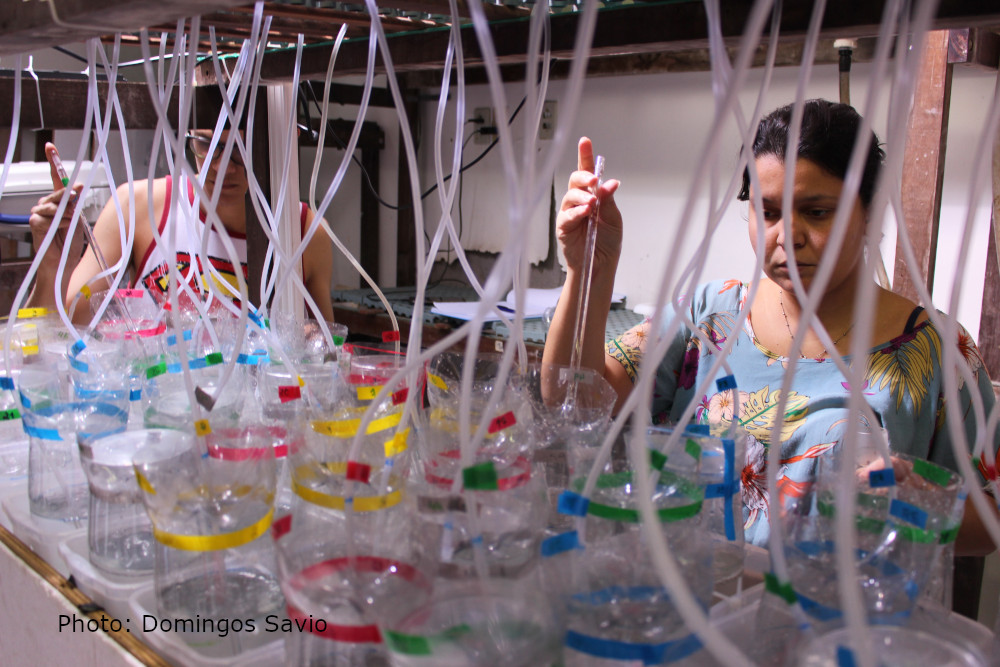
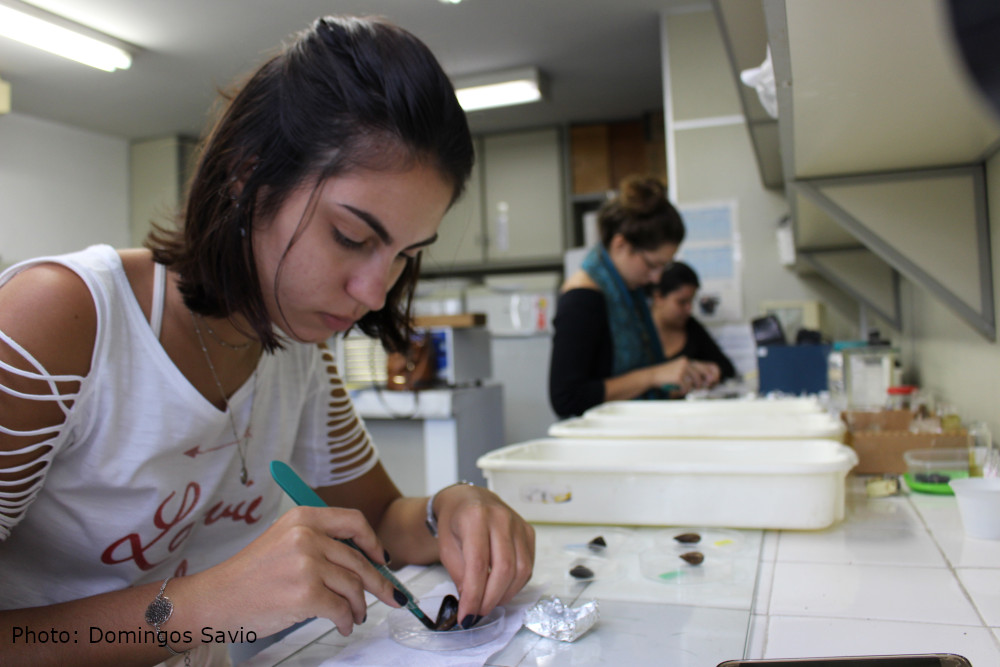
On July 2nd, the start of the main experiment forced me to spend the week of my 40th birthday on June 28th with working 12 hours a day in the lab for measuring the baselines for the different response variables! These measurement days, which repeated themselves after three, i.e. in the middle of the experiment, and after six weeks, i.e. at the end of the experiment, required a great effort by the entire team. Everybody was intensively involved for four consecutive days.
The daily routines during the following weeks flowed without unforeseen troubles. To coordinate the work, I numbered the daily tasks, made weekly schedules with these numbers, and pinned them to the lab wall. The students were always willing to help and gave their best when working on the experiment. On some Saturdays, I had the “collaboration” of my children, who, by the end of the experiment, had made a “friendship” with the mussels – an unforeseen benefit of the GAME project!
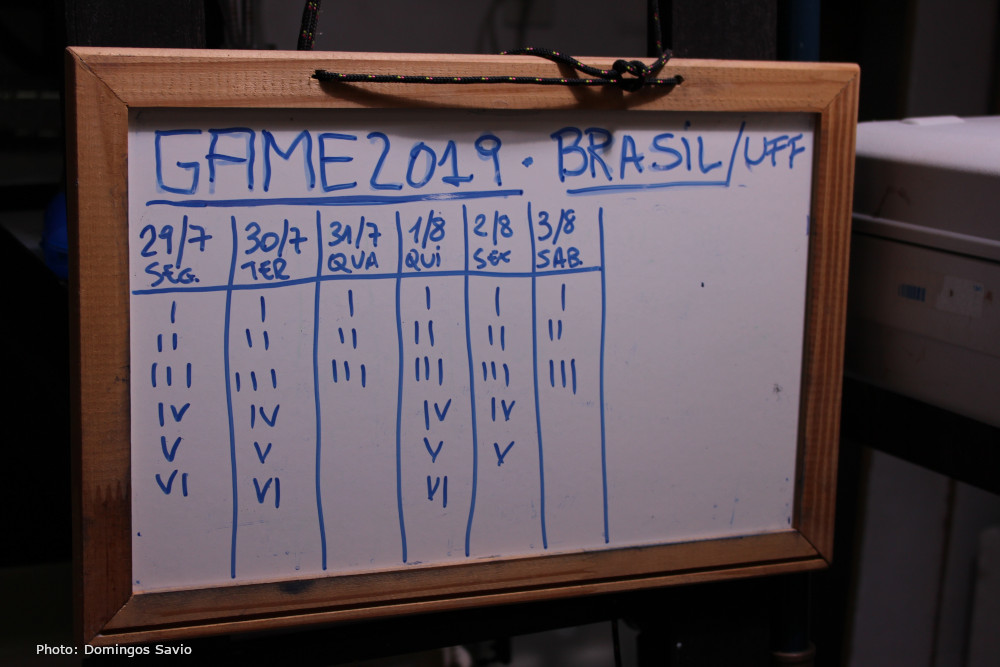
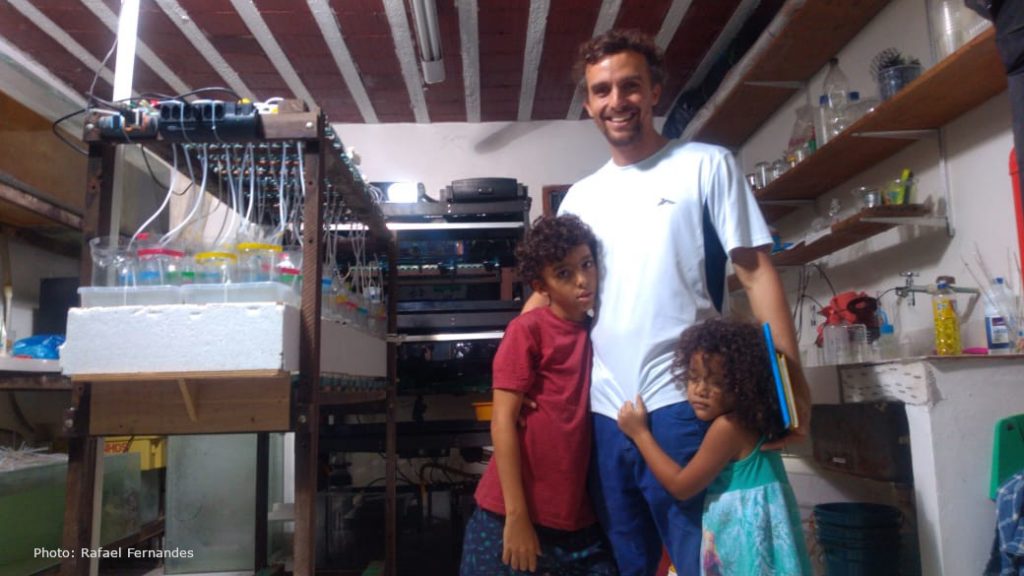
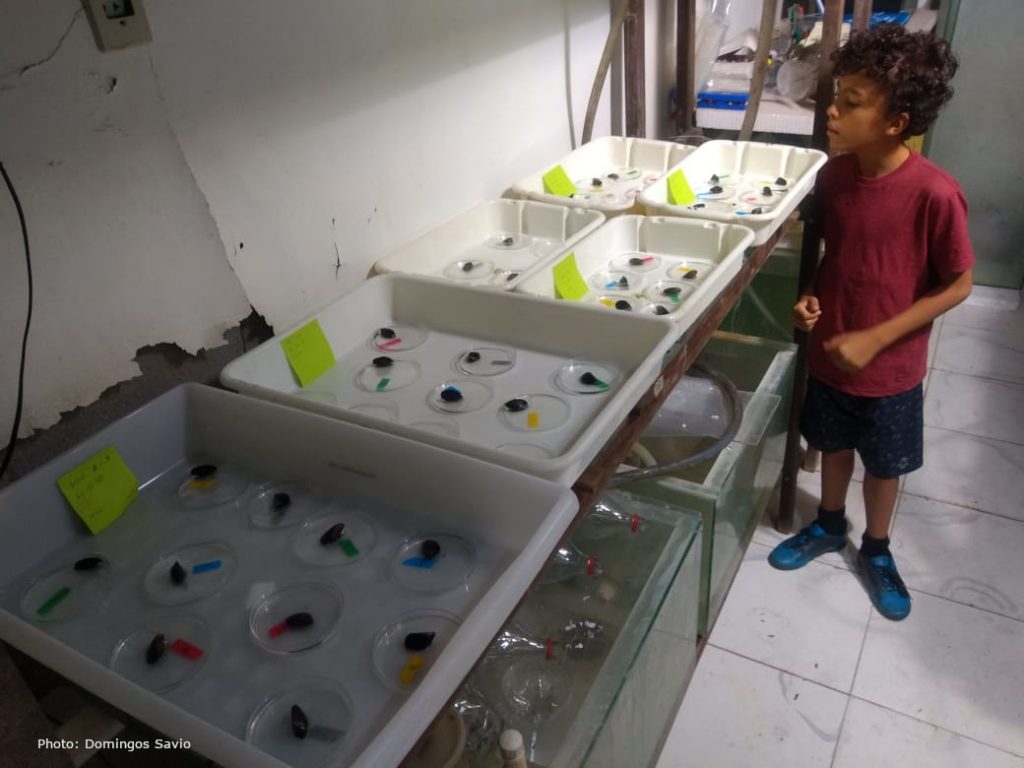
When the sixth week was completed, I decided to finish the experiment. I was tired but very happy to have reached the end of the experiment with a low mortality among the test mussels and to have achieved the minimum time span that was required for the experiment. Everybody considered this a big success! Now I have a lot of data to analyze and a short time left to prepare myself for my return to Kiel in October.
I would like to thank everyone involved, in addition to those already mentioned, I also thank the marine biology students at UFF: Amanda, Arthur, Bias, Caio, Isabelas,Jade and Rafael! Many thanks to the sixteen other GAME students of 2019, especially to Paulo, Leo and Jonas, who helped me a lot from a large distance. Without their help, it would not have been possible for me to complete the experiment in Brazil.
I look forward to meeting the friends of GAME 2019!
